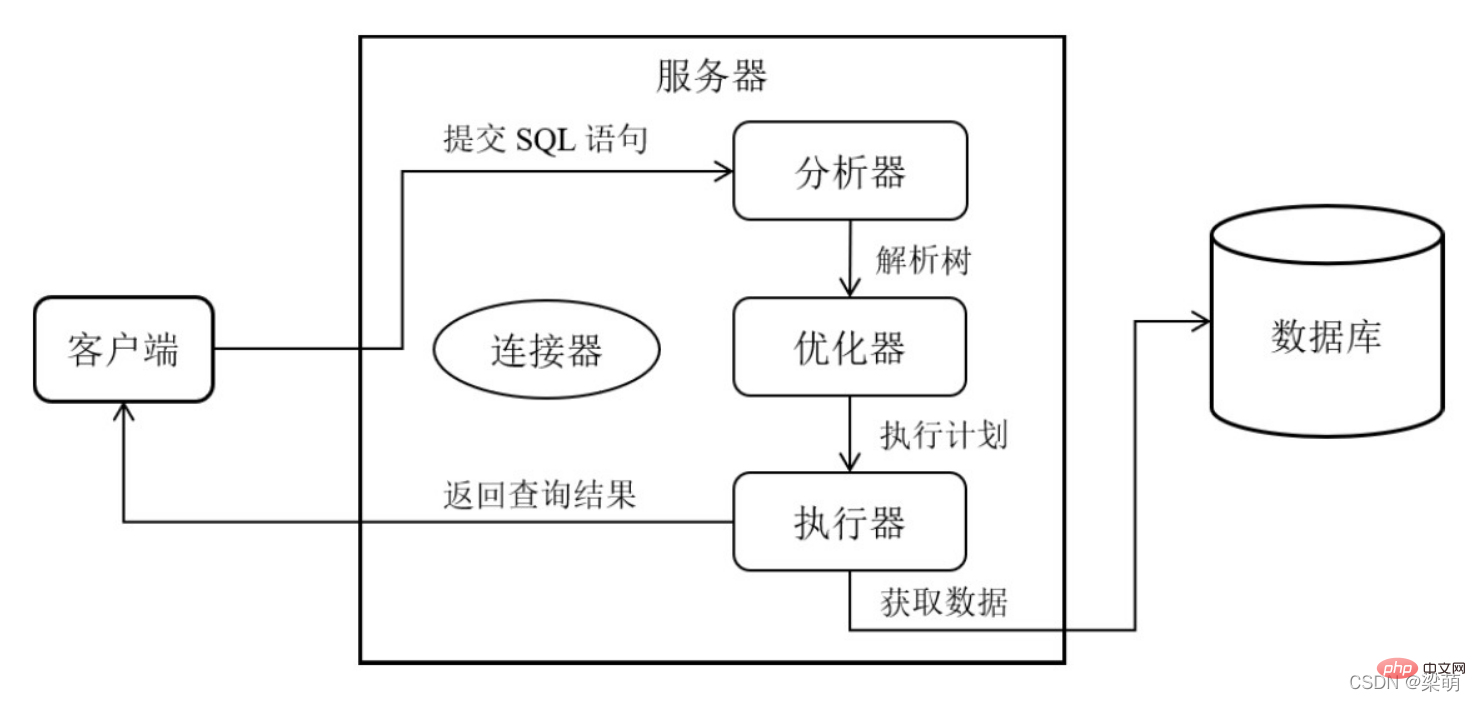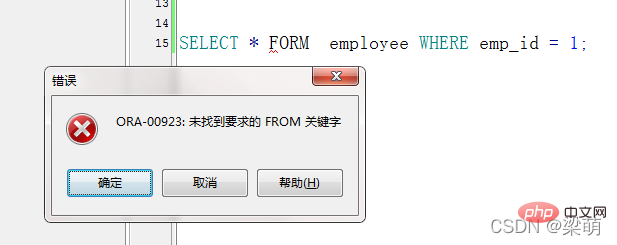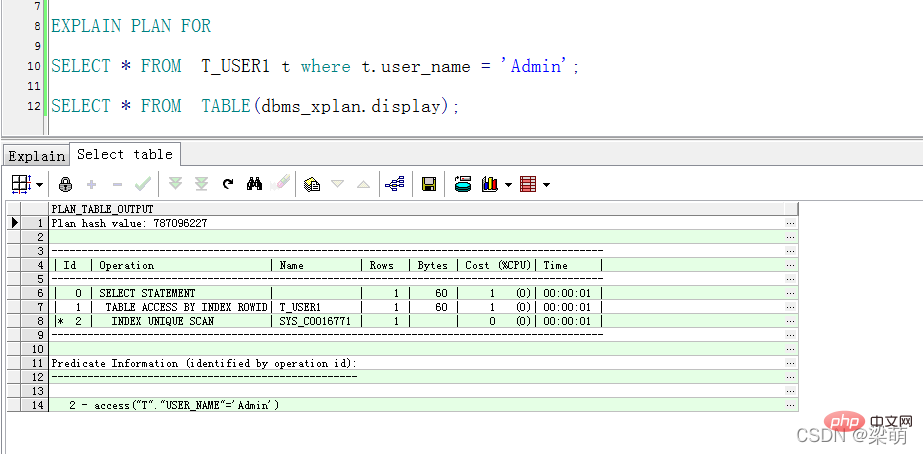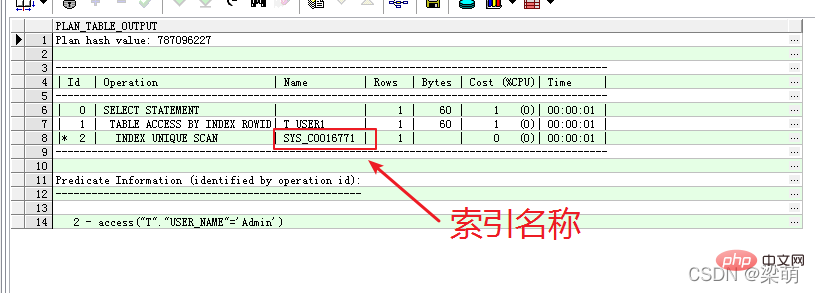Summarize Oracle query execution plan
This article brings you relevant knowledge about Oracle, which mainly introduces the relevant content about query execution plan. It is the specific steps and process of executing SQL statements in the database. Let’s take a look. Take a look, hope it helps everyone.

Recommended tutorial: "Oracle Video Tutorial"
Execution Plan (Execution Plan) is also called Query Plan (Query Plan), which is the specific steps and process for the database to execute SQL statements. The execution plan of a SQL query statement mainly includes:
How to access the table. The database accesses data in the table through indexes or full table scans.
How to join multiple tables. What connection algorithm is used by the database to connect tables, including the sequential access sequence of multiple tables.
How to implement operations such as grouping, aggregation and sorting.
Although different databases adopt different implementation methods for the execution process of SQL queries, a query statement generally needs to be processed by the analyzer, optimizer and executor and return the final result. At the same time, various caches may also be used to improve access performance.
Simply put, a query statement starts from the submission of the client until the server returns the final result. The entire process is roughly as shown in the figure.

First, the client submits the SQL statement. Before this, the client must connect to the database server. The connector in the figure is the component responsible for establishing and managing client connections.
Then, the analyzer (parser) parses the various components of the SQL statement, performs syntax analysis, and checks whether the syntax of the SQL statement conforms to the specification.
For example, the FROM keyword in the following statement is incorrectly written as FORM:

In this case, all database management systems will return a syntax mistake.
The optimizer then uses the statistical information collected by the database to determine the best way to execute the SQL statement. For example, whether to access a single table through an index or a full table scan, what order to use to connect multiple tables, how to sort data, etc.
The optimizer is a key component that determines query performance, and the statistical information of the database is the basis for the optimizer's judgment.
Finally, the executor calls the corresponding execution module to obtain the data according to the optimized execution plan, and returns the result to the client.
How to view the execution plan
Method 1: Statement view
In the Oracle database, we can also use the EXPLAIN PLAN FOR command to generate an execution plan , but two commands need to be executed:

EXPLAIN PLAN FOR SELECT * FROM T_USER1 t where t.user_name = 'Admin'; SELECT * FROM TABLE(dbms_xplan.display);
Use the EXPLAIN PLAN FOR command to generate an execution plan, store it in the system table PLAN_TABLE, and then display the generated execution plan through a query statement execution plan.
Where dbms_xplan.display is an Oracle system function. The returned results show that the statement finds data through 'SYS_C0016771' index range scan in Oracle.

Method 2: Use tools to view
In the commonly used Oracle database development tool PL/SQL, select a SQL script, Press the F5 key to automatically display the execution plan information of the script, which is the same as the result queried in method 1.

Execution process analysis
In the Oracle database, we can query the index and related field information through the system tables user_indexes and user_ind_columns.
SELECT * FROM user_indexes; SELECT * FROM user_ind_columns;
Recommended tutorial: "Oracle Video Tutorial"
The above is the detailed content of Summarize Oracle query execution plan. For more information, please follow other related articles on the PHP Chinese website!

Hot AI Tools

Undresser.AI Undress
AI-powered app for creating realistic nude photos

AI Clothes Remover
Online AI tool for removing clothes from photos.

Undress AI Tool
Undress images for free

Clothoff.io
AI clothes remover

AI Hentai Generator
Generate AI Hentai for free.

Hot Article

Hot Tools

Notepad++7.3.1
Easy-to-use and free code editor

SublimeText3 Chinese version
Chinese version, very easy to use

Zend Studio 13.0.1
Powerful PHP integrated development environment

Dreamweaver CS6
Visual web development tools

SublimeText3 Mac version
God-level code editing software (SublimeText3)

Hot Topics
 1381
1381
 52
52
 How to check tablespace size of oracle
Apr 11, 2025 pm 08:15 PM
How to check tablespace size of oracle
Apr 11, 2025 pm 08:15 PM
To query the Oracle tablespace size, follow the following steps: Determine the tablespace name by running the query: SELECT tablespace_name FROM dba_tablespaces; Query the tablespace size by running the query: SELECT sum(bytes) AS total_size, sum(bytes_free) AS available_space, sum(bytes) - sum(bytes_free) AS used_space FROM dba_data_files WHERE tablespace_
 How to get time in oracle
Apr 11, 2025 pm 08:09 PM
How to get time in oracle
Apr 11, 2025 pm 08:09 PM
There are the following methods to get time in Oracle: CURRENT_TIMESTAMP: Returns the current system time, accurate to seconds. SYSTIMESTAMP: More accurate than CURRENT_TIMESTAMP, to nanoseconds. SYSDATE: Returns the current system date, excluding the time part. TO_CHAR(SYSDATE, 'YYY-MM-DD HH24:MI:SS'): Converts the current system date and time to a specific format. EXTRACT: Extracts a specific part from a time value, such as a year, month, or hour.
 How to encrypt oracle view
Apr 11, 2025 pm 08:30 PM
How to encrypt oracle view
Apr 11, 2025 pm 08:30 PM
Oracle View Encryption allows you to encrypt data in the view, thereby enhancing the security of sensitive information. The steps include: 1) creating the master encryption key (MEk); 2) creating an encrypted view, specifying the view and MEk to be encrypted; 3) authorizing users to access the encrypted view. How encrypted views work: When a user querys for an encrypted view, Oracle uses MEk to decrypt data, ensuring that only authorized users can access readable data.
 How to view instance name of oracle
Apr 11, 2025 pm 08:18 PM
How to view instance name of oracle
Apr 11, 2025 pm 08:18 PM
There are three ways to view instance names in Oracle: use the "sqlplus" and "select instance_name from v$instance;" commands on the command line. Use the "show instance_name;" command in SQL*Plus. Check environment variables (ORACLE_SID on Linux) through the operating system's Task Manager, Oracle Enterprise Manager, or through the operating system.
 How to uninstall Oracle installation failed
Apr 11, 2025 pm 08:24 PM
How to uninstall Oracle installation failed
Apr 11, 2025 pm 08:24 PM
Uninstall method for Oracle installation failure: Close Oracle service, delete Oracle program files and registry keys, uninstall Oracle environment variables, and restart the computer. If the uninstall fails, you can uninstall manually using the Oracle Universal Uninstall Tool.
 How to import oracle database
Apr 11, 2025 pm 08:06 PM
How to import oracle database
Apr 11, 2025 pm 08:06 PM
Data import method: 1. Use the SQLLoader utility: prepare data files, create control files, and run SQLLoader; 2. Use the IMP/EXP tool: export data, import data. Tip: 1. Recommended SQL*Loader for big data sets; 2. The target table should exist and the column definition matches; 3. After importing, data integrity needs to be verified.
 How to check invalid numbers of oracle
Apr 11, 2025 pm 08:27 PM
How to check invalid numbers of oracle
Apr 11, 2025 pm 08:27 PM
Oracle Invalid numeric errors may be caused by data type mismatch, numeric overflow, data conversion errors, or data corruption. Troubleshooting steps include checking data types, detecting digital overflows, checking data conversions, checking data corruption, and exploring other possible solutions such as configuring the NLS_NUMERIC_CHARACTERS parameter and enabling data verification logging.
 How to set up users of oracle
Apr 11, 2025 pm 08:21 PM
How to set up users of oracle
Apr 11, 2025 pm 08:21 PM
To create a user in Oracle, follow these steps: Create a new user using the CREATE USER statement. Grant the necessary permissions using the GRANT statement. Optional: Use the RESOURCE statement to set the quota. Configure other options such as default roles and temporary tablespaces.




